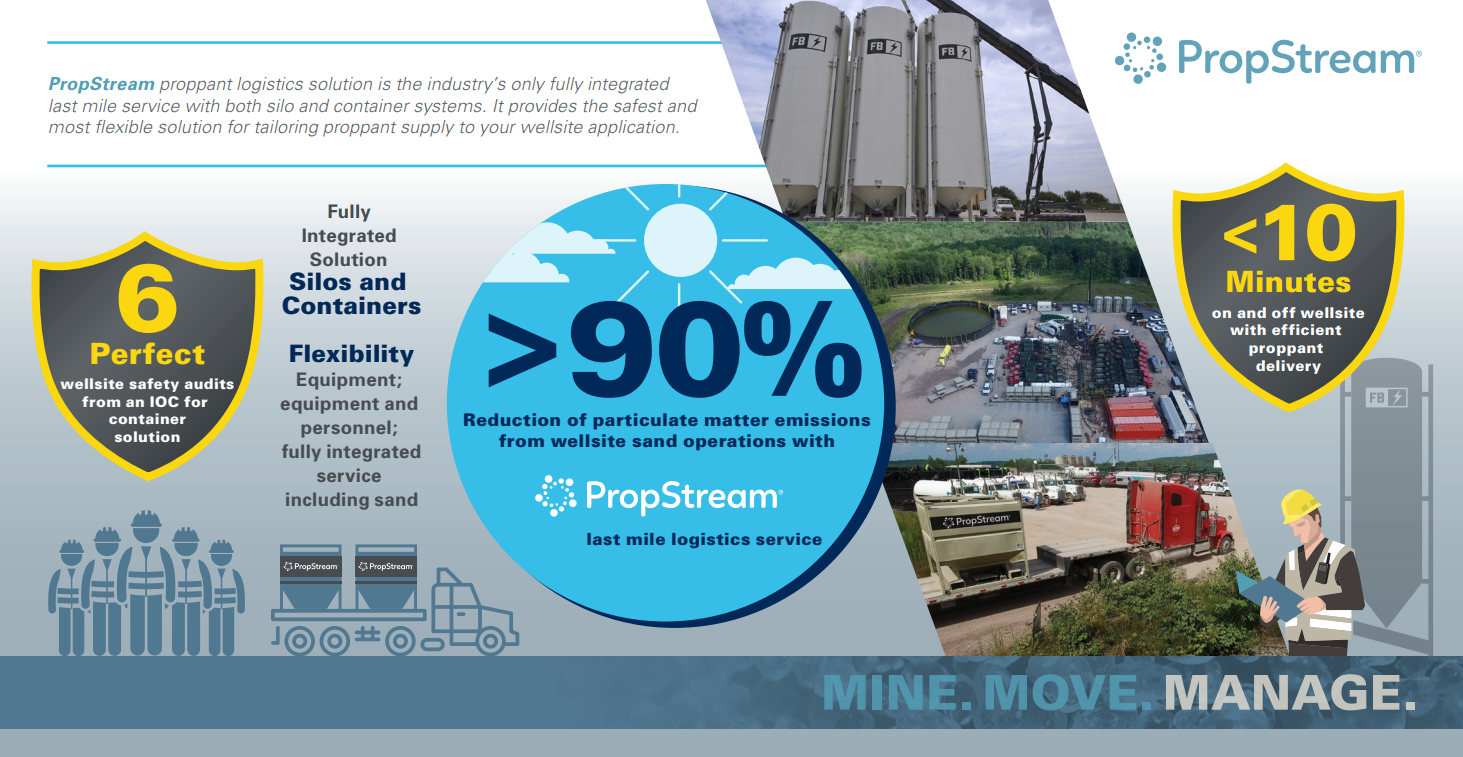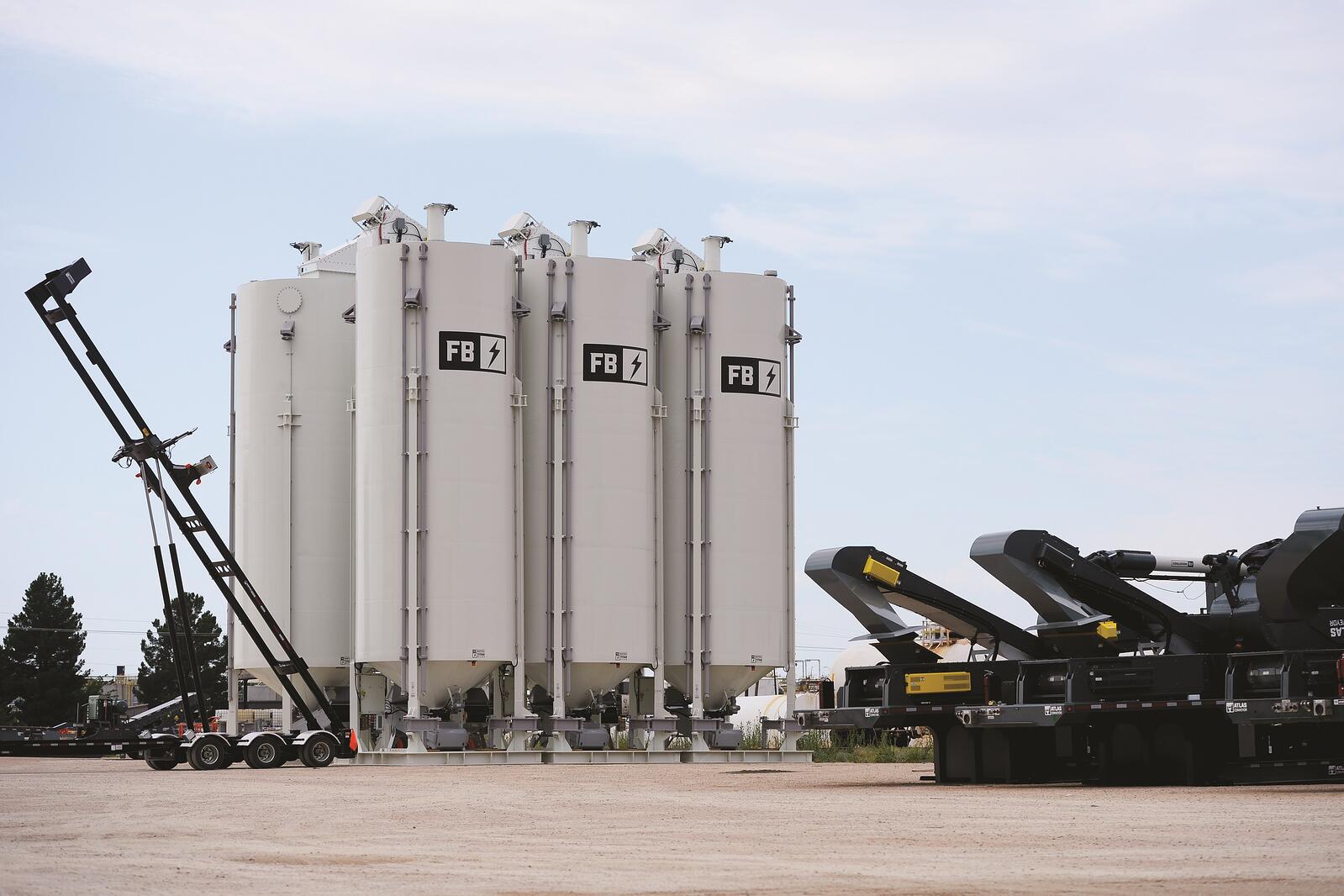Two Solutions for Reliable Frac Sand Supply
Shale oil and gas production owes its success in large part to small grains of sand – and lots of them.
Hydraulic fracturing treatments are primarily focused on pumping proppant (frac sand) deep into a network of shale fractures. Proppant keeps fractures from closing and provides porosity and a permeable path for oil and gas to travel. Without proppant, the fractures close, and the point of the treatment evaporates. Running out of frac sand is not an option.
Sand is so critical to hydraulic fracturing that if the supply is disrupted, the entire operation comes to a grinding stop. Delays can upset execution of a single job, or ripple through entire frac programs and wreak havoc with revenue plans. The process and technology for ensuring this does not happen is a highly specialized aspect of hydraulic fracturing logistics.
Providing large volumes of highly specified sand to the fracturing system’s bender equipment is a massive undertaking. A single well may require upwards of 10,000 tons of sand and often, multiple wells on a single wellsite are treated. Frac sand requirements are huge. 
Executing the hydraulic fracturing treatment involves many companies, hundreds of personnel and intensive planning and logistics. The sand component alone may involve hundreds of transport trucks and require an array of specialized equipment systems to deliver, store and provide proppant to the blender.
Sand inventory must be precisely tracked and stored in sufficient volumes to satisfy design objectives. There are many variables to consider in ensuring this occurs. Sand specifications change because hydraulic fracturing designs vary with the formation and well objectives. Engineers specify particular sand sizes and may change sizes for different stages of the same well treatment. Volume of sand varies with well length, the number of treatment stages, formation type, treatment objectives and many other factors.
Because proppant logistics take place in the context of field operations, other factors include access to the wellsite, size of the wellsite, and other equipment on location. Logistics also must consider onsite storage footprint and the process for proppant delivery. On already busy wellsites, traffic congestion can be greatly intensified by fleets of sand delivery trucks.
Unloading, storing and handling sand also must comply with OSHA standards for exposure to silica dust. Breathing the dust poses health risks, and emissions must be minimized at every stage of the process.
The sand system must also accommodate variables during the execution of the hydraulic fracture treatment, ranging from how the formation responds to the ongoing treatment to simple mechanical failures and delays.
To guarantee proppant supply at the wellsite, the industry has developed an extensive and wide ranging scope of innovative technologies. These highly specialized tools are generally organized by how the sand is stored – in silos or containers.
Silos are vertical wellsite storage systems used for very large volumes of sand. A single silo may hold more than 250 tons of sand, and large operations may require six or more silos.

Silos may be as tall as 50 feet and 12 feet in diameter. Moving and installing them is a specialized process with wellsite access and staging considerations that include road conditions, terrain, pad dimensions and support equipment.
Silos are transported empty and erected onsite using cranes and specialized erection systems. Once in place, silos are loaded with proppant. This process typically takes place in either of two ways: pneumatic systems that move sand from delivery trucks to the silo using compressed air and gravity fed conveyor systems that collect sand from hopper bottom trucks and top fill the silos.
Pneumatic systems were an early solution to delivering the large volumes of sand required by emerging shale-fracturing methods. But as sand volumes increased, the air-operated systems presented a number of challenges. Key among them is the large amount of silica dust created by blowing sand into the silos.
The proppant transfer process is also time consuming and requires connecting a large number of trucks to silos. To hasten the transfer, this is typically done in groups of trucks offloading simultaneously, which creates a great deal of noise as well as congestion as trucks enter location and are staged at the silo.
Conveyor-based systems are a more recent innovation and increasingly used because they are faster and produce less silica dust. Some of these systems use hopper-bottom trucks to dump sand loads onto drive-over conveyor systems. The simple gravity-fed unloading is faster and eliminates connections, truck staging, and even the need for drivers to be outside the truck. Trucks pull through, dump the sand and exit location.
Once unloaded, proppant is conveyed and discharged into the top of each silo. Top loading shortens silo-loading time, and articulated discharge chutes can quicken switching between silos.
During the hydraulic fracturing treatment, silos are unloaded onto a conveyor system for transport to the blender. The specialized conveyors must be able to smoothly change between silos, as well as control, monitor and manage sand levels in the silos to ensure a steady, accurate supply.
Containers are modular systems for smaller proppant volumes and on wellsites where a high degree of flexibility is required for storage and staging. Because they eliminate proppant transfer to a silo, containers are the most effective at cutting silica sand dust emission, particularly when compared to pneumatic systems.

Containers come in various sizes and load capacities, but a typically a container holds about 12 tons of frac sand in an 8-foot by 12-foot cube. Containers are loaded on a flatbed truck at the mine or transload facility and transported two-at-a-time to the wellsite.
On location, containers are offloaded by forklift to serve as onsite storage and staging devices, which eliminates a transfer step. On tight locations, ongoing fracturing operations can be quickly replenished while empty containers are hauled away by the same truck. For onsite storage, the containers can be stacked and arranged to provide a highly flexible sand footprint.
Containers also make it easy to track and segregate proppant inventory, especially when the frac design calls for stages with different sizes and volumes. When the job is finished, containers help preserve the integrity of any remaining frac sand for use on another well.
To deliver proppant to the frac blender, container systems may use a specialized conveyor system that accepts multiple containers at a time. Once loaded, the containers gravity-feed an enclosed conveyor system. A control system delivers the required volume to the blender while monitoring sand inventory.
